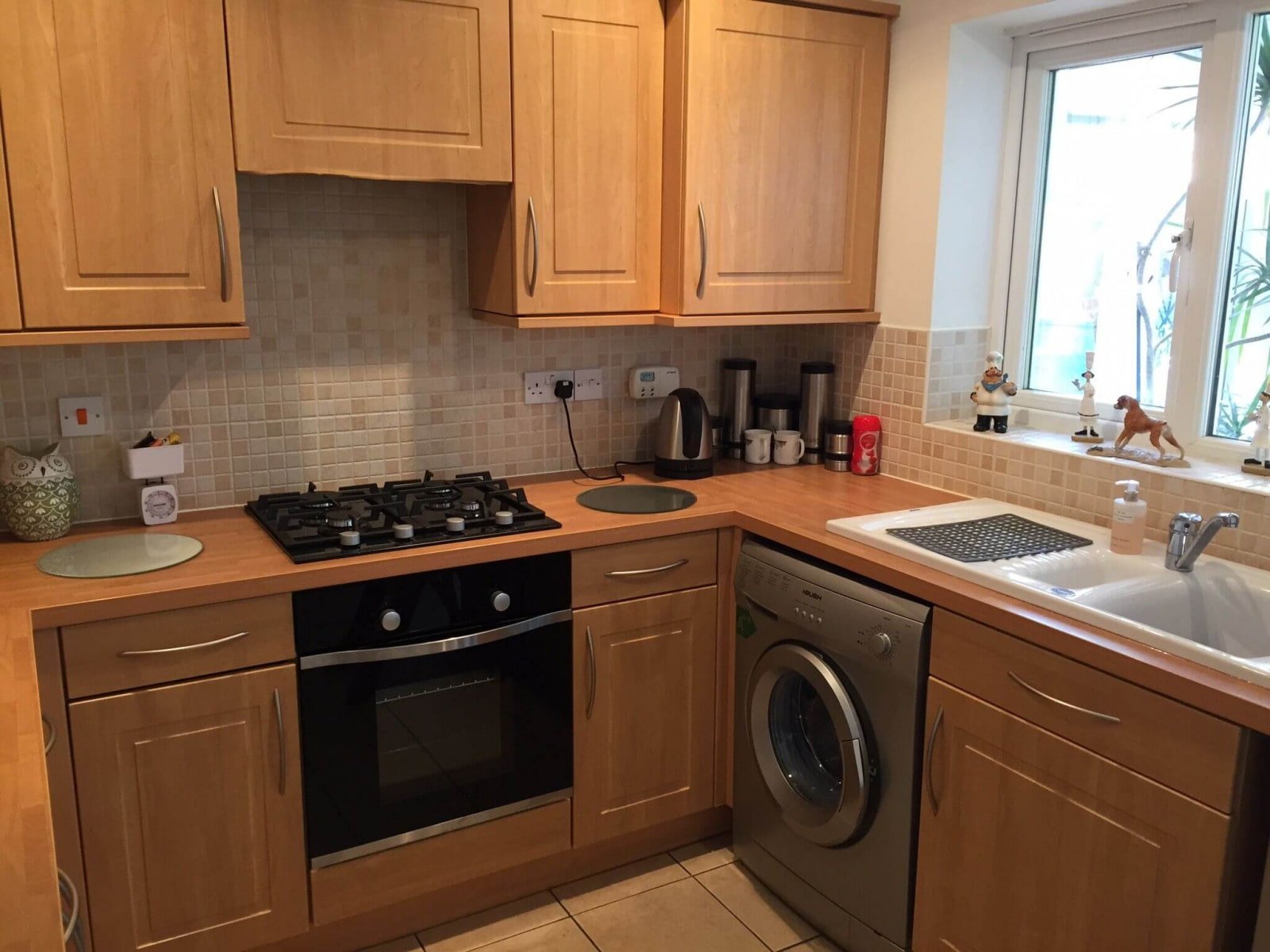Pros and Cons
The pros and cons of a washing machine in the kitchen should be taken into account when moving it.
- There is already a water supply and sewerage system.
- There is enough space to place a full-size model.
- Moving the machine reduces the risk of short circuits due to high humidity.
- The storage area will decrease.
- The noise of the machine can disturb those in the room.
- Washing powders cannot be stored near food.
Where is the best place to place the machine?
The main requirements for installing a washing machine are: proximity to utilities (water supply and sewerage), the presence of a grounded outlet and a flat floor surface.
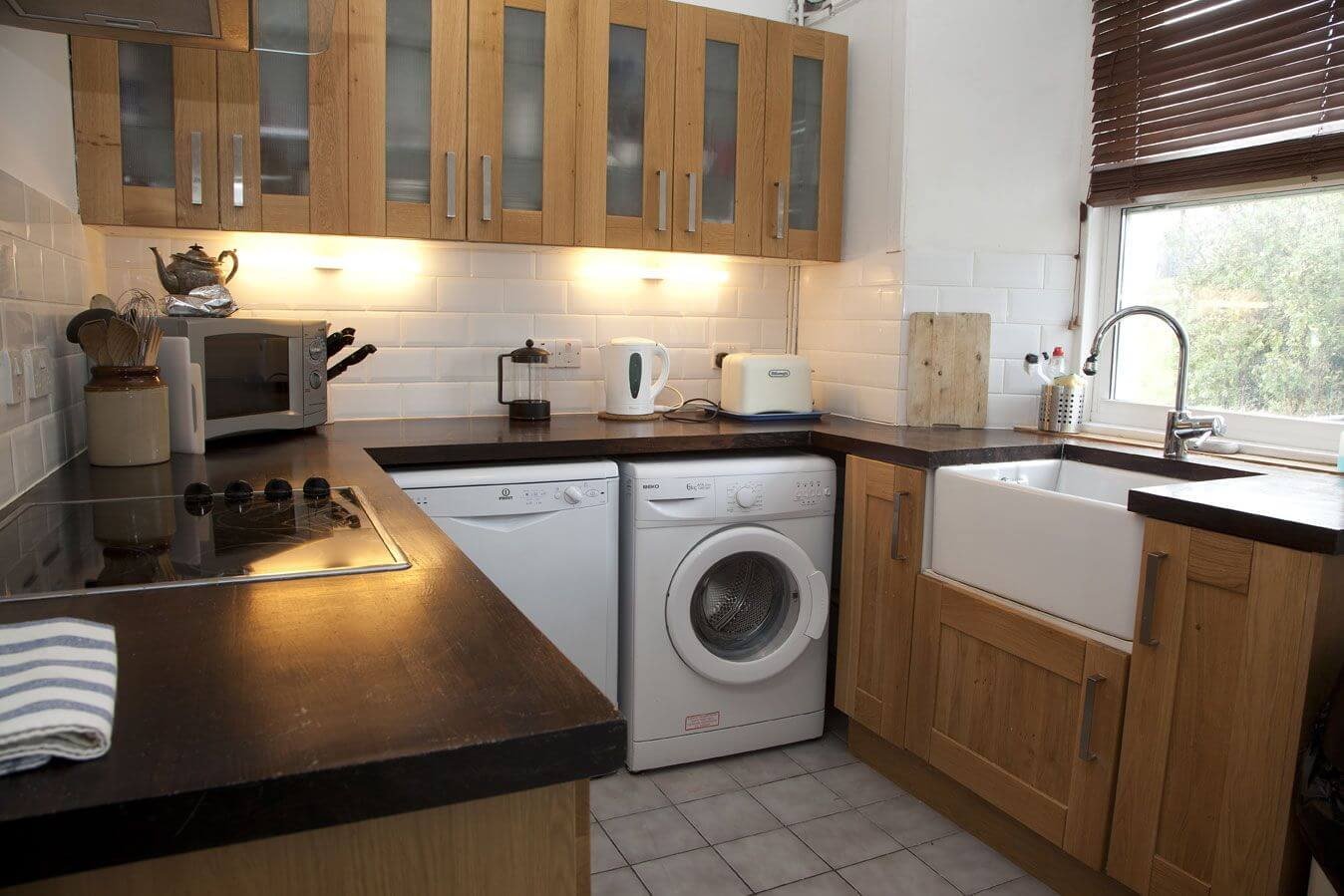

The photo shows a washing machine and dishwasher near the sink
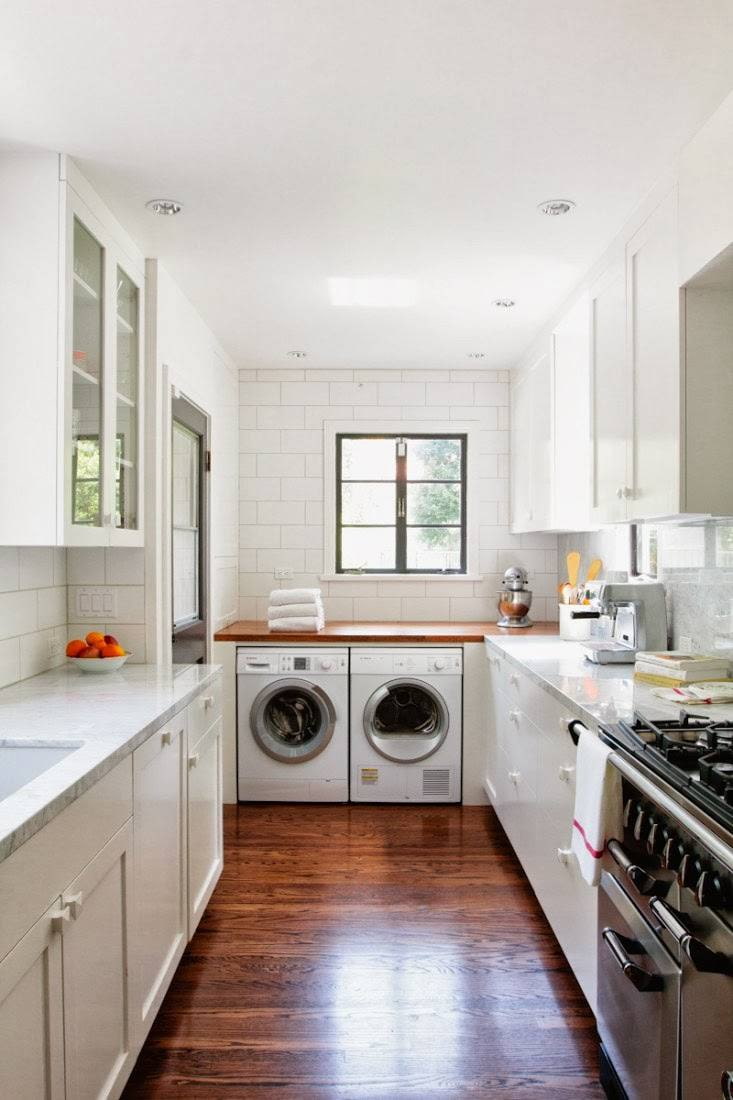

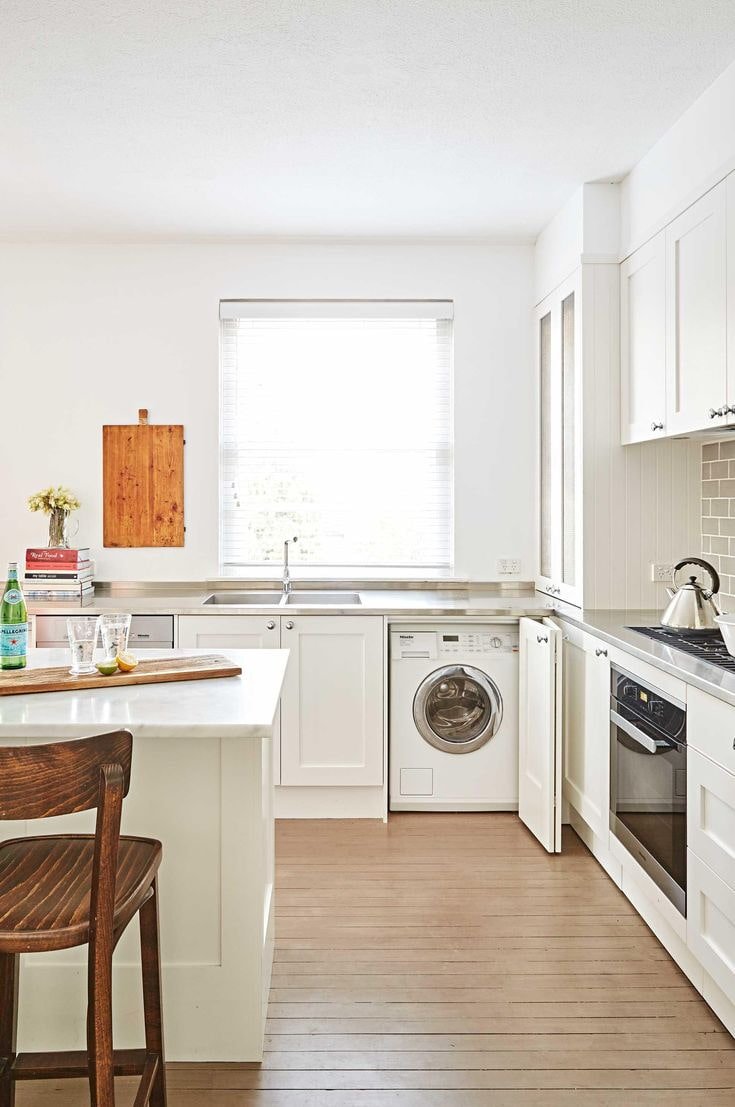

To avoid regretting the move, follow the rules:
- do not allow close proximity of the washing machine to other household appliances: vibration is harmful to the refrigerator and oven;
- never install the machine under the hob – high temperatures will damage its plastic parts;
- placing a washing machine and a dishwasher next to each other is possible if there is a gap between them and vibration during spinning is not transmitted to the dishwasher;
- the water supply and sewer hoses should be no more than 2.5-3 meters in length, this will reduce the possibility of leaks and blockages in them;
- when placing the washing machine inside the drawer, it is necessary to leave a gap of 2 cm on each side to account for vibration;
- take care to install a base that can be easily removed to be able to get to the drain filter if necessary.
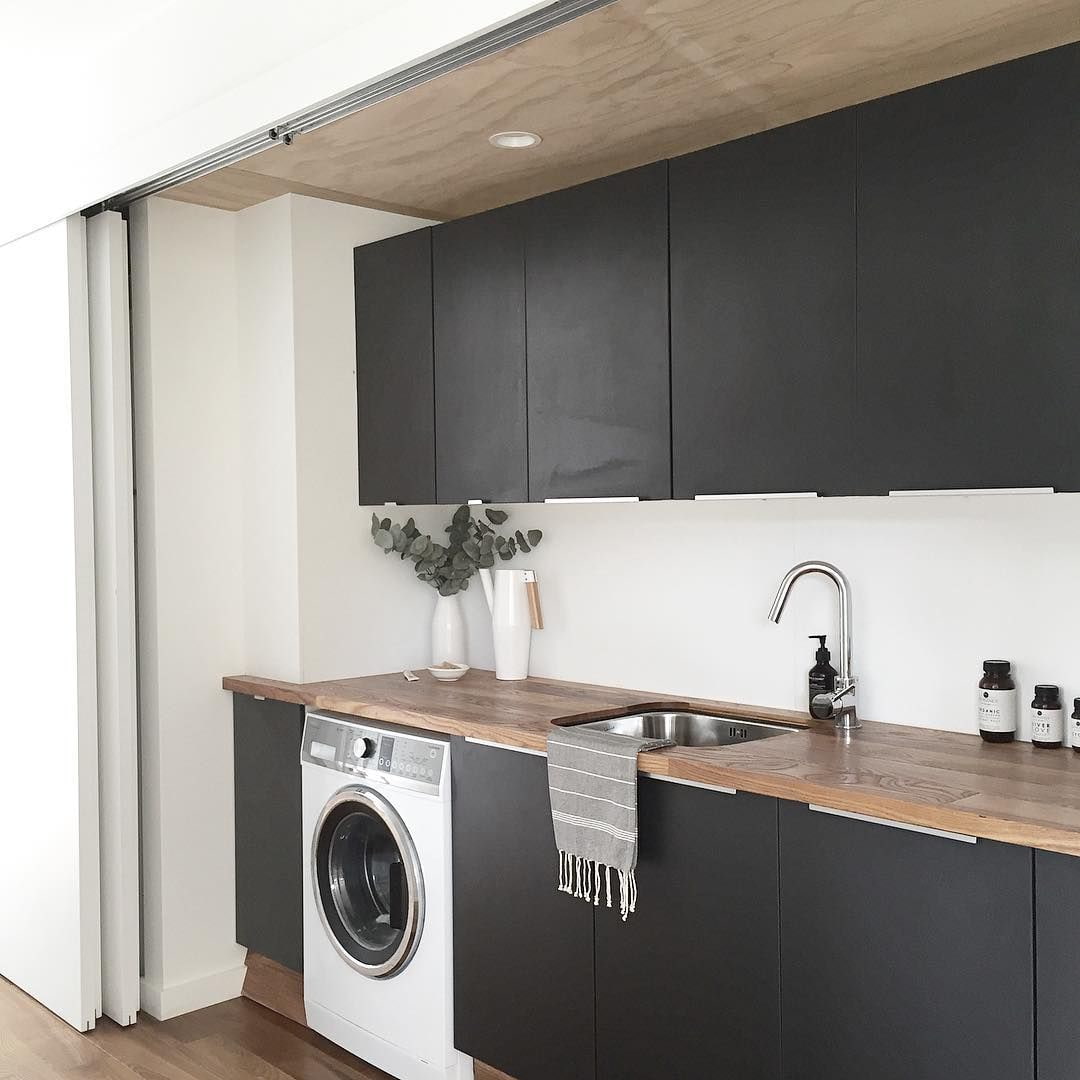

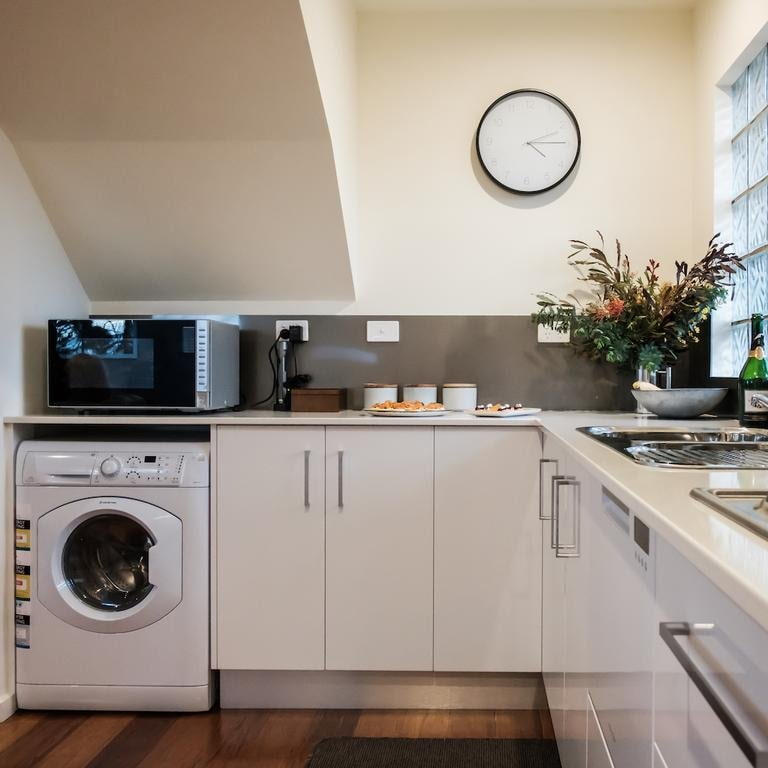

Installation methods
The choice depends on the kitchen design for the washing machine, the model and the preferences of each family. A built-in washing machine in the kitchen will remain invisible to prying eyes, a classic version with side loading can be hidden under the facade or made an accent, a device with vertical loading requires a separate space, but there is an option to install it under the countertop.
Built-in washing machine in the kitchen under the countertop without a door
A regular machine is installed in an empty niche between the modules. You do not need to order a special box for it, but you should take care of the harmony in the interior in advance. To avoid making a showy appearance, choose a model that matches the color and style of other household appliances or kitchen furniture that is nice to show off.
Dimensions are just as important as design: a model that is 2-3 cm below the countertop and 5-6 cm narrower than the niche is considered successful. Calculate the depth so that there is space for the connection.
Because of the need for gaps on the sides, the cracks will be visible all the time: to avoid this, choose another option.
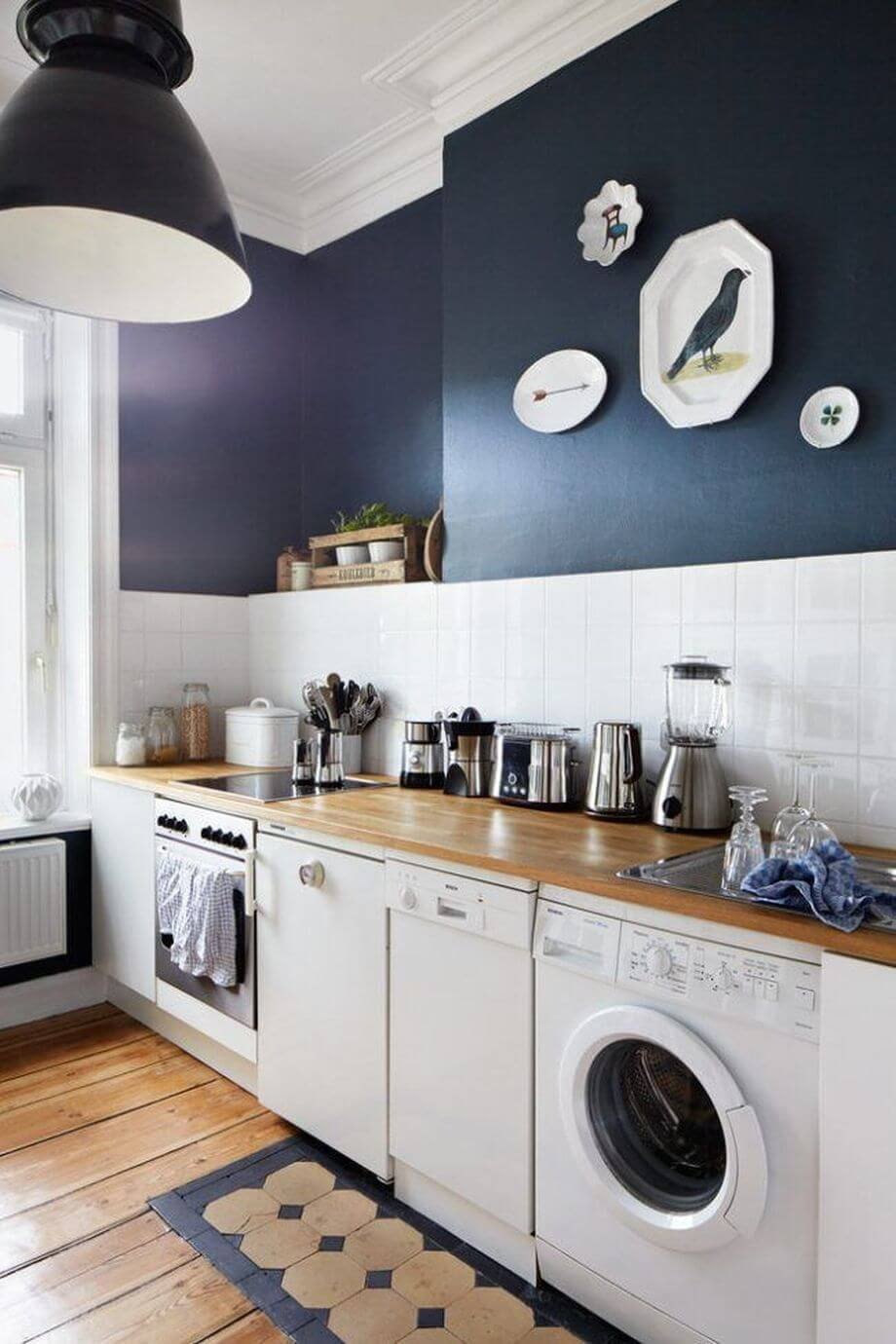

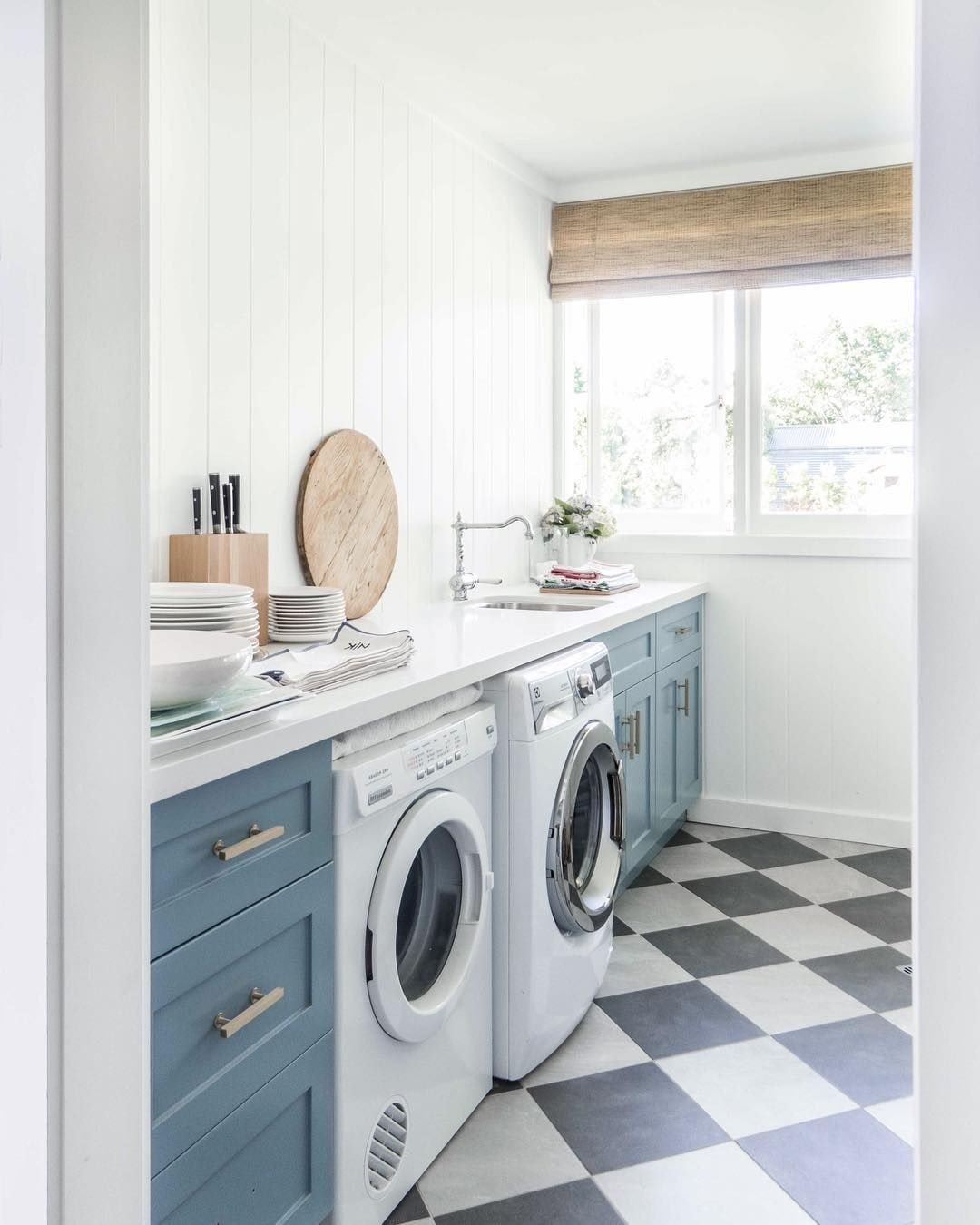

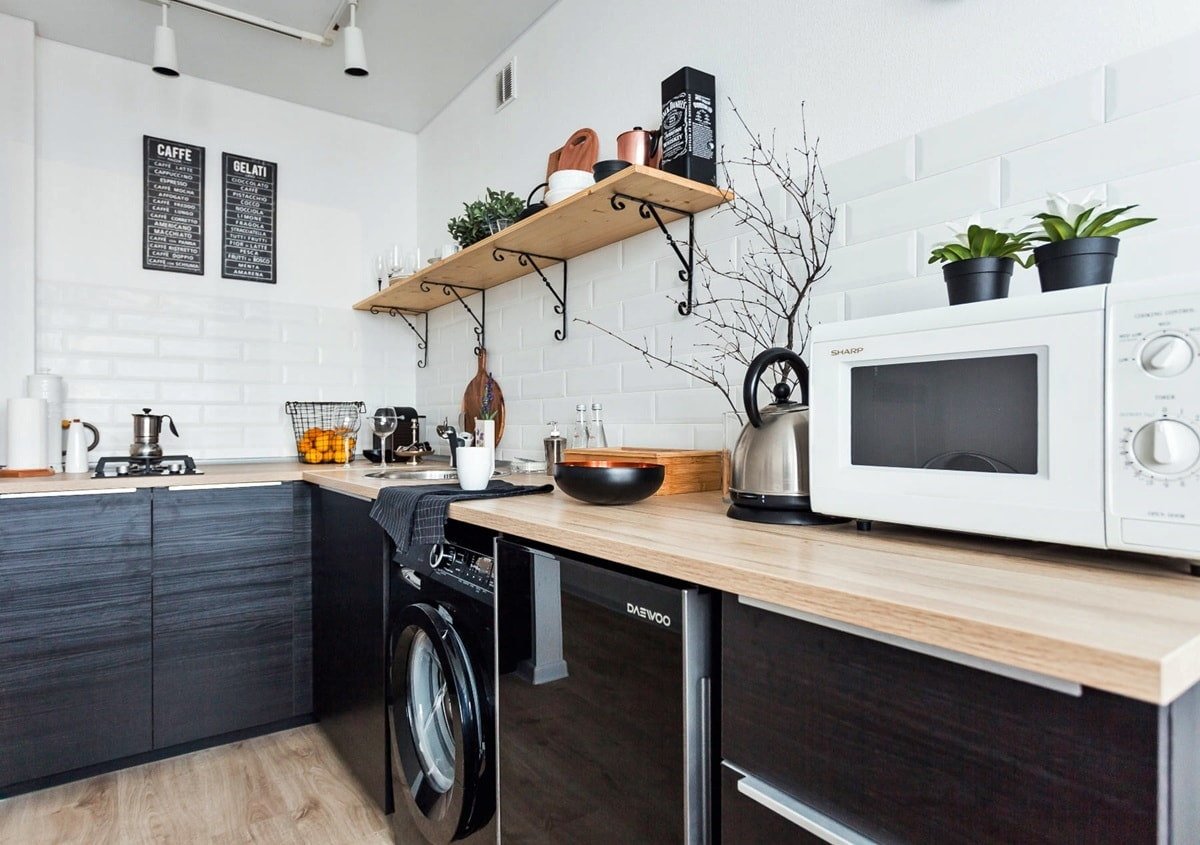

The photo shows a dark kitchen with black appliances
A washing machine built into a kitchen unit behind the facade
The range of built-in models is small, and the price for them is quite high, but at the same time, a built-in washing machine is almost invisible in the kitchen.
A stationary model can also be hidden behind door. The requirements for dimensions and clearances in this case are the same as for installation without a door. But in this case, depth is also important: there should be space at the back for a water hose, and at the front for installing the facade, taking into account a gap of 2.5 cm.
Tip: loading and unloading laundry is more comfortable when the door opens at 110 degrees or more.
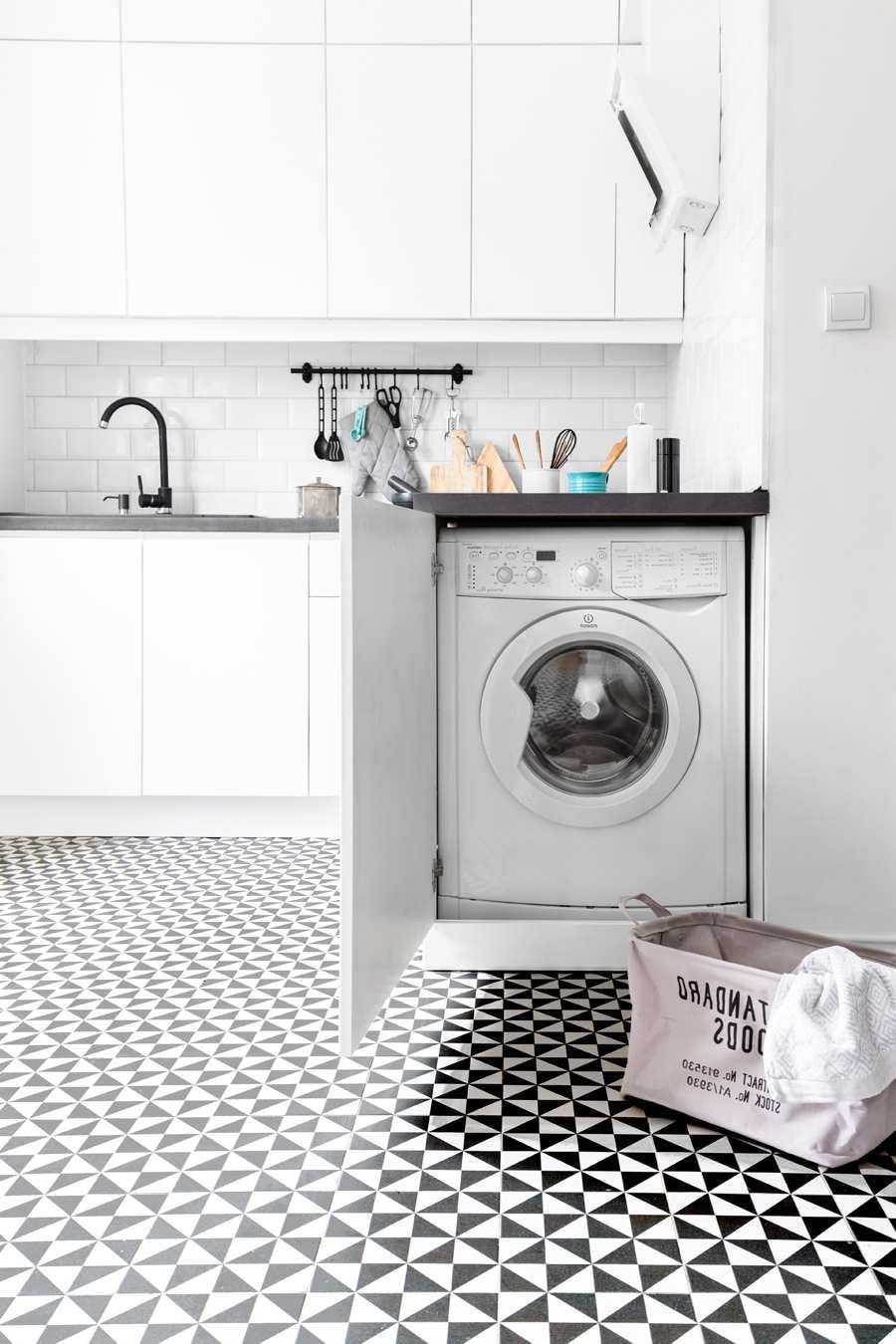

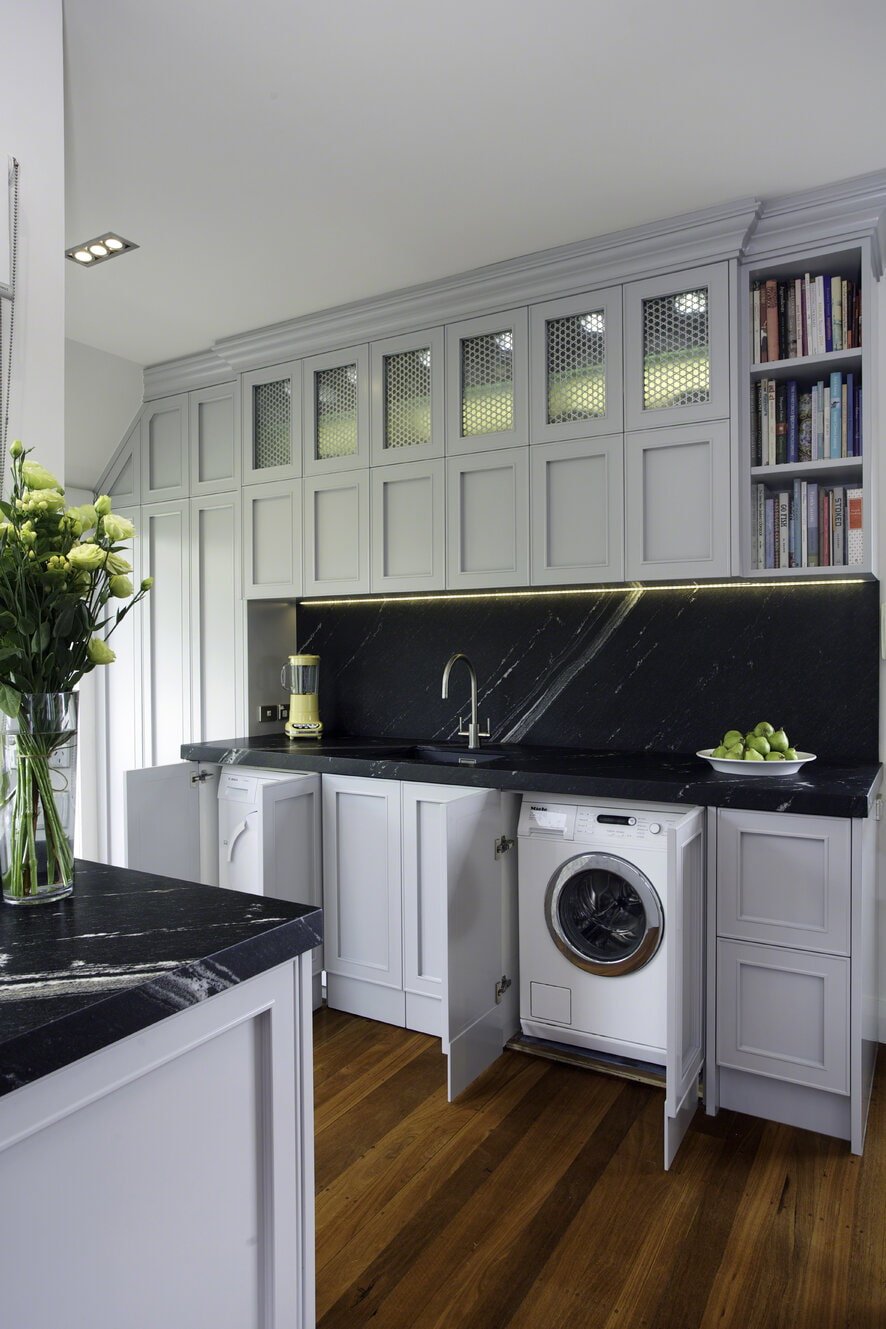

The photo on the left shows an option for placing the machine on the end wall
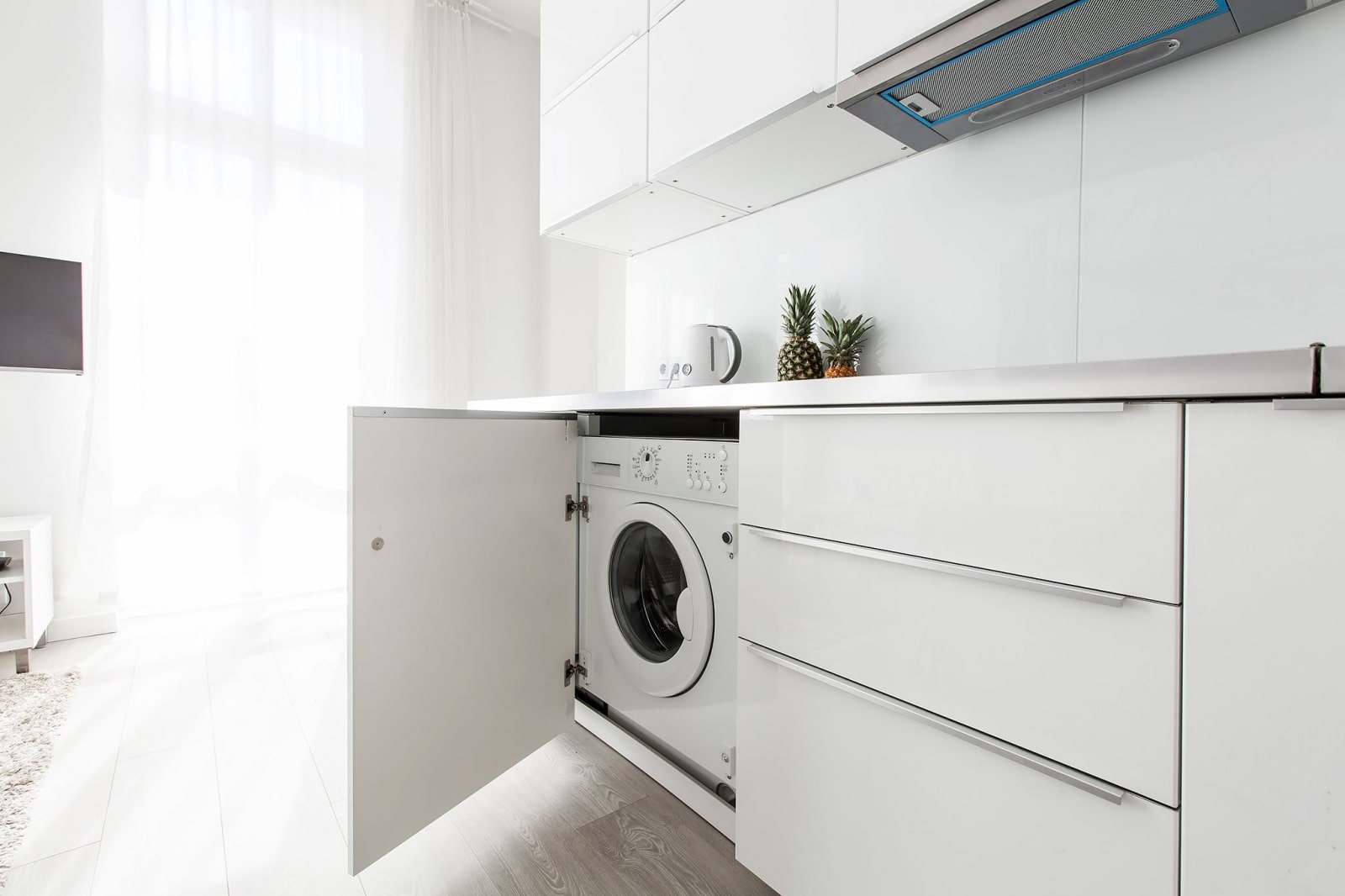

Stationary location
The options for kitchens with a washing machine are not limited to built-in ones.
In a spacious kitchen or studio, you can equip a special laundry area, separating it with a curtain or door. A narrow model installed at the end of a kitchen unit will save space in a small kitchen.
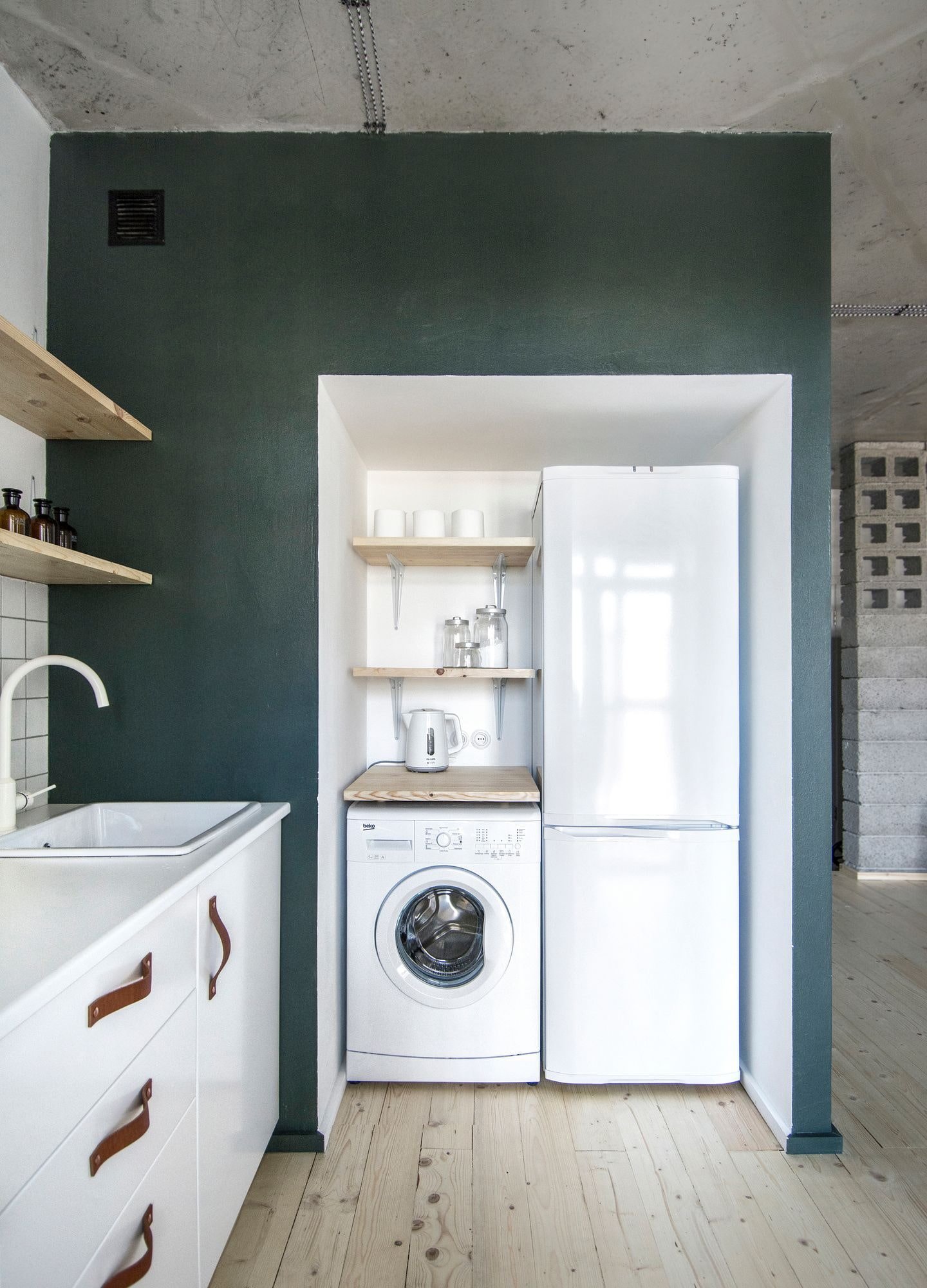

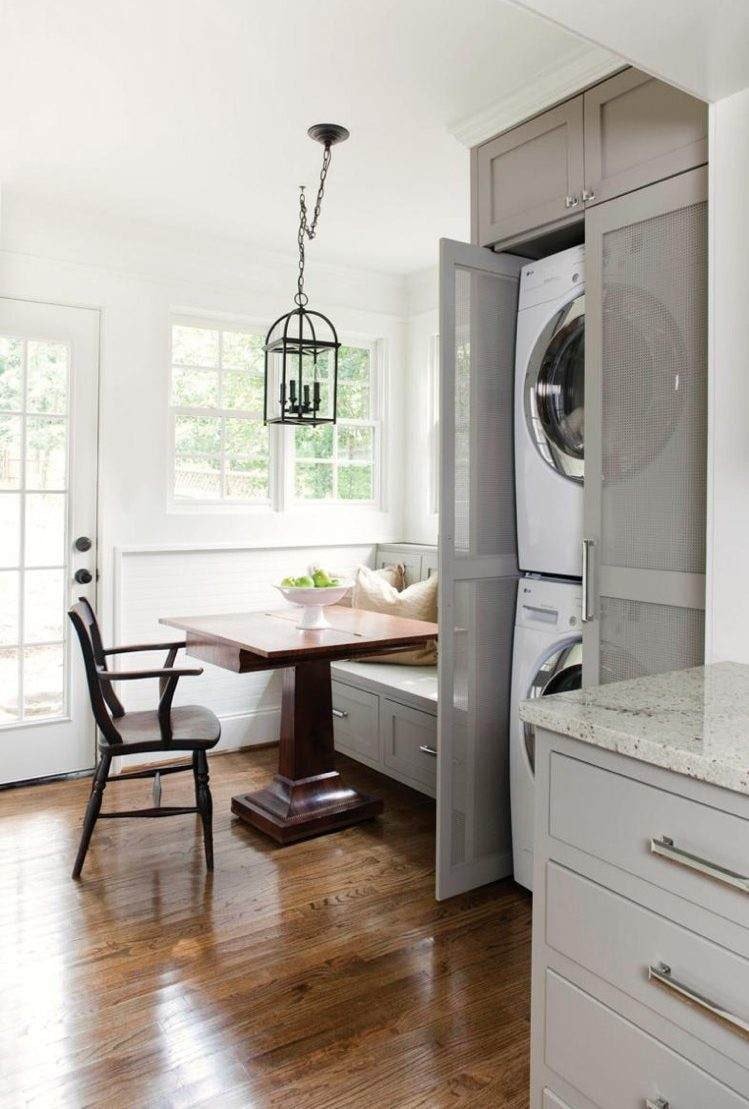

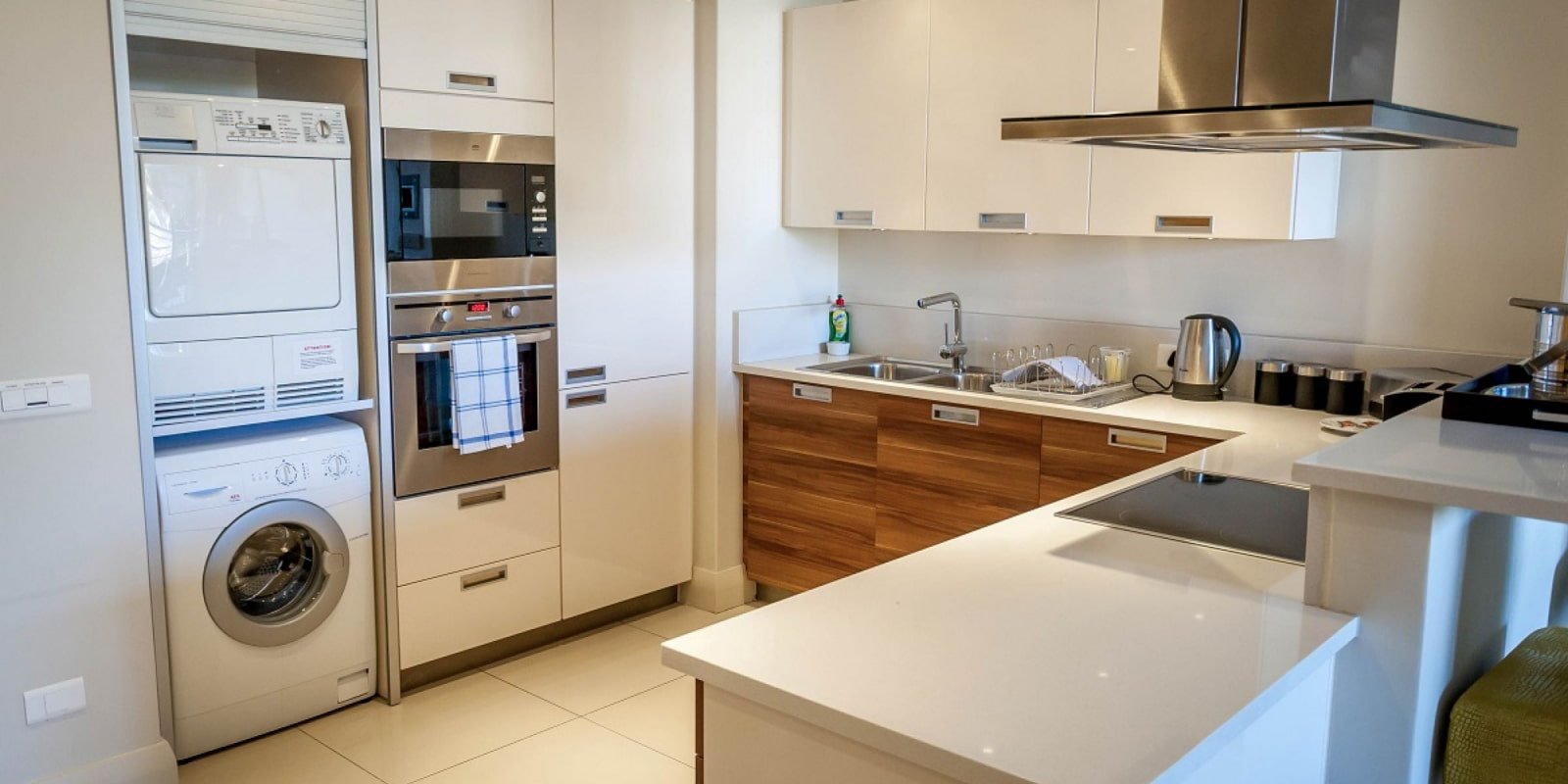

In the photo, a cabinet for washing is highlighted
Washing machine in a cabinet
There are several options for implementing this idea:
- A kitchen cabinet with hinged doors. If you make it 20-25 cm wider than necessary, you can organize the storage of detergents.
- The lower sector of the tall cabinet. Any model can fit into the cabinet upon request, and there will be free space above for everything you need.
- Built-in cabinet. Close the free niche with doors and you can get a spacious area for placing the washing area.
Tip: provide a gap on the left so that nothing interferes with the extension of the powder and conditioner tray.
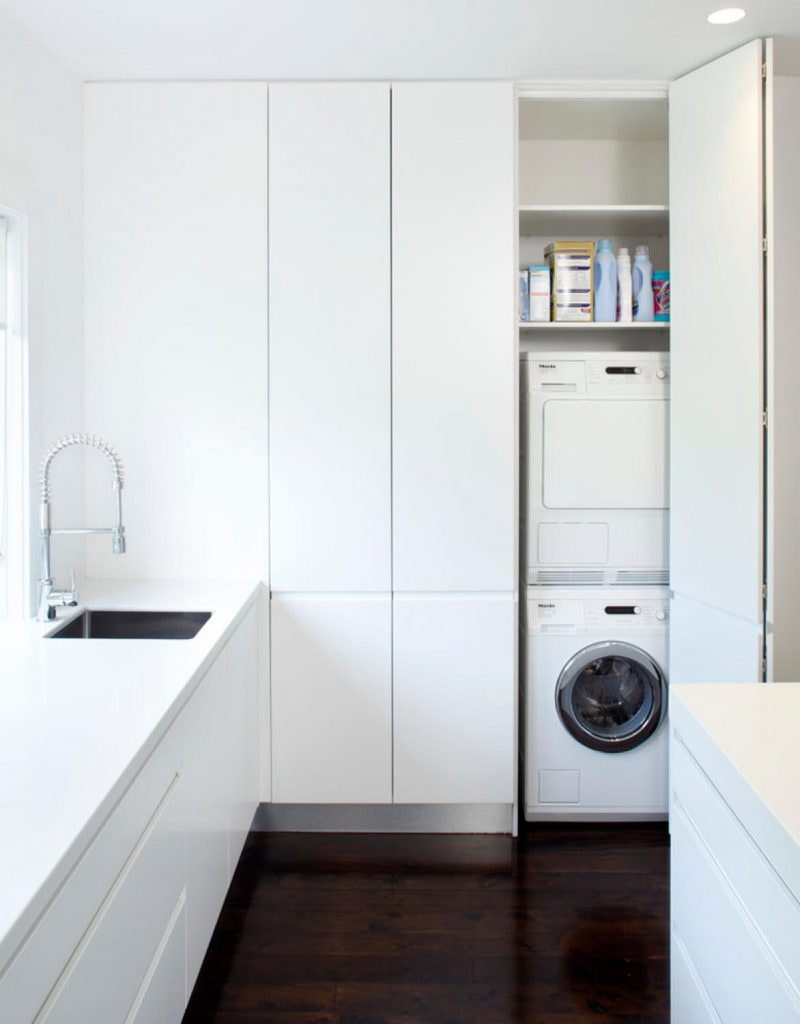

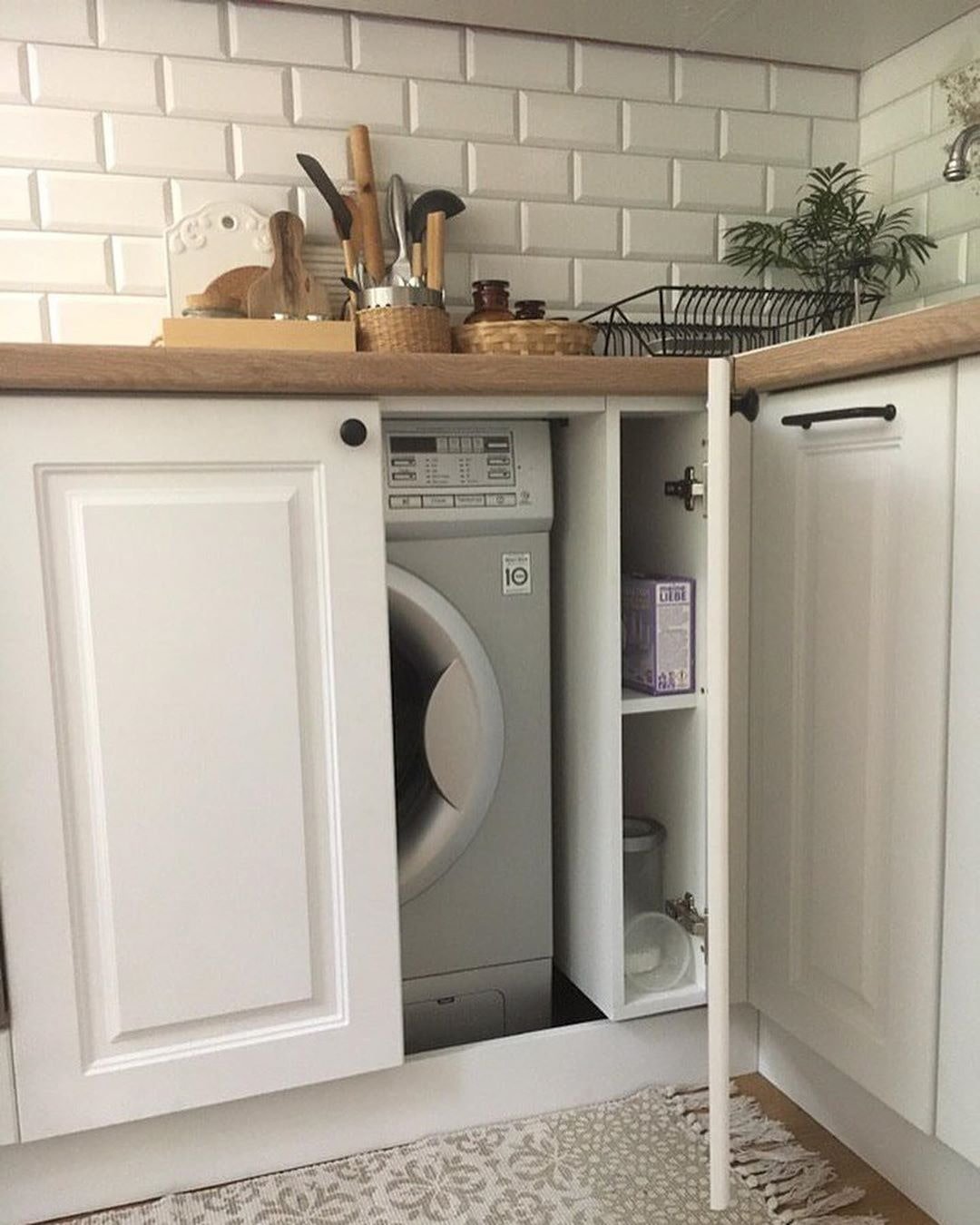

The photo shows a storage option for detergents
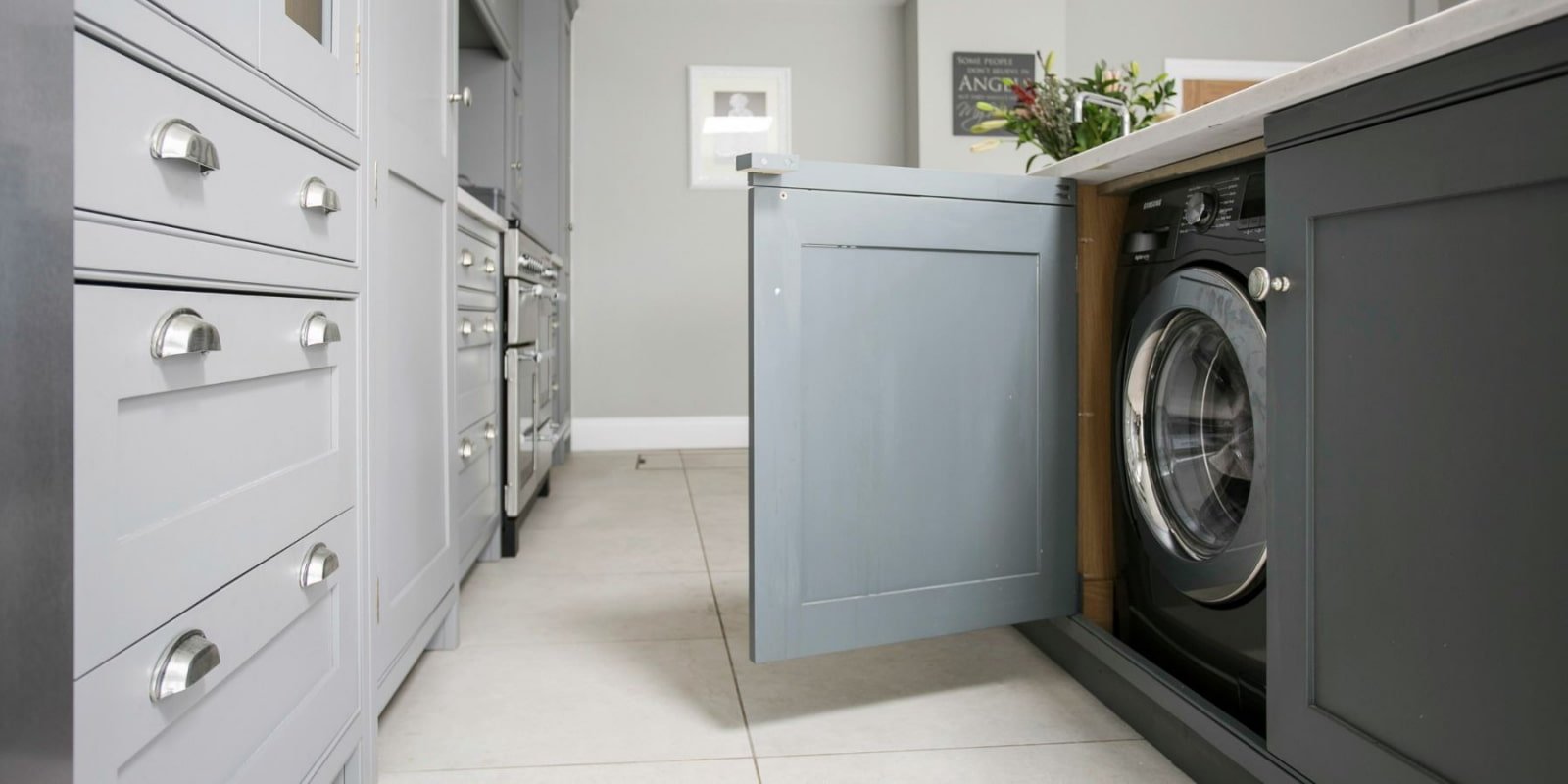

Placement of a top-loading machine
Such a model is placed stationary, built in under a folding tabletop or put away in a closet.
In the first case, the appearance of the device can negatively affect the interior, in the second – it will not always be convenient to use. When placing in a cabinet, it is necessary to leave space at the top for comfortable loading and unloading.
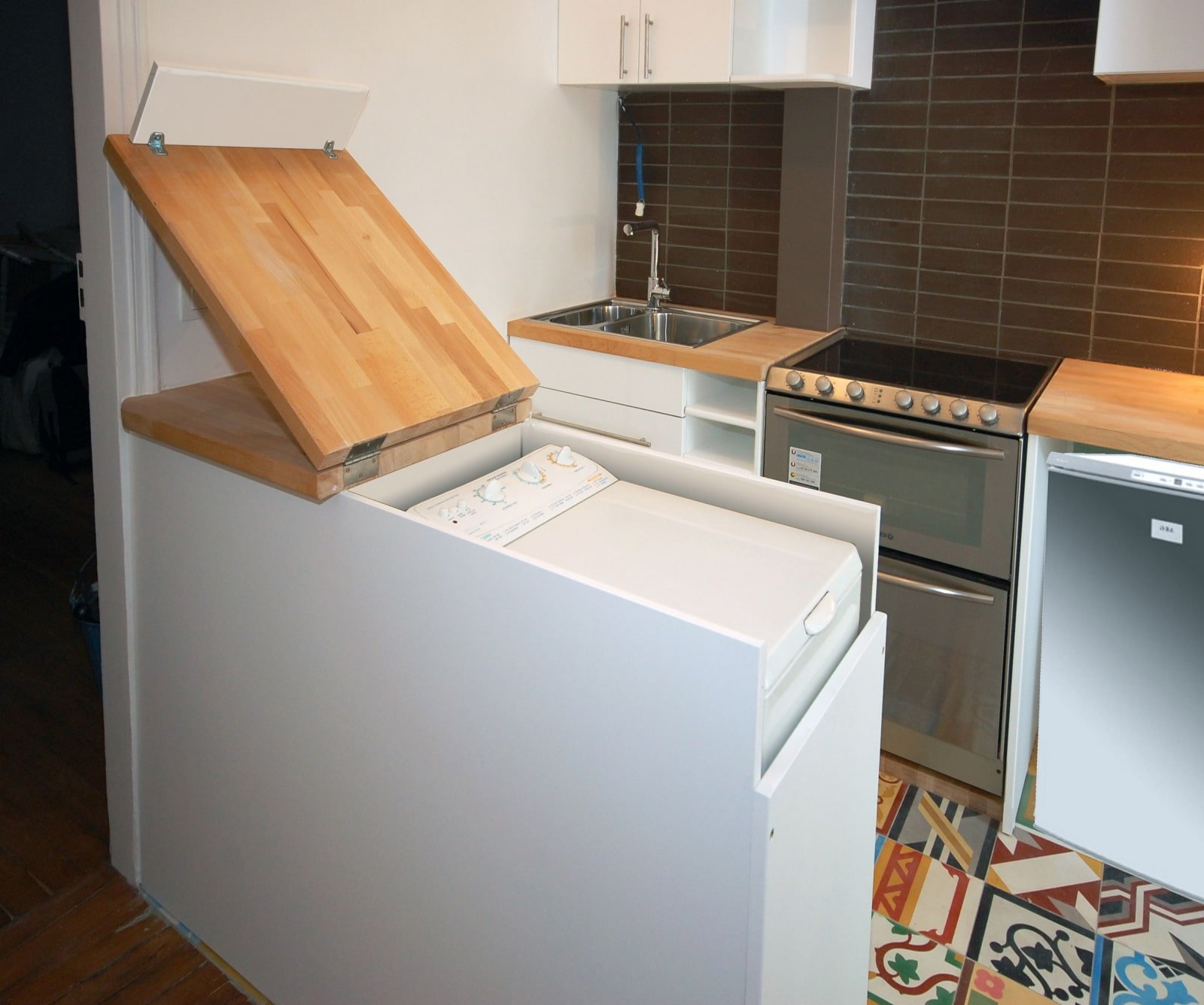

The photo shows a built-in top-loading machine
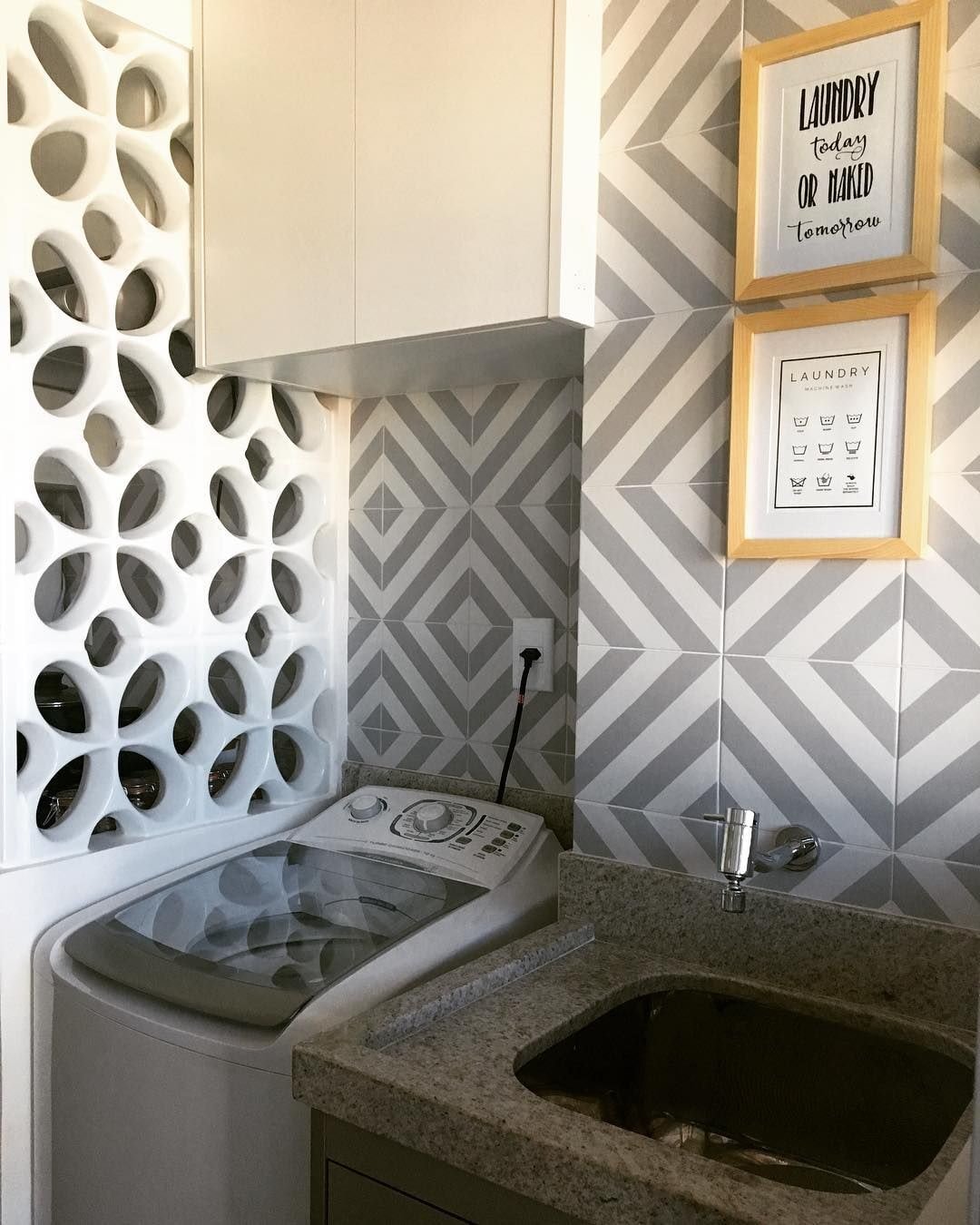

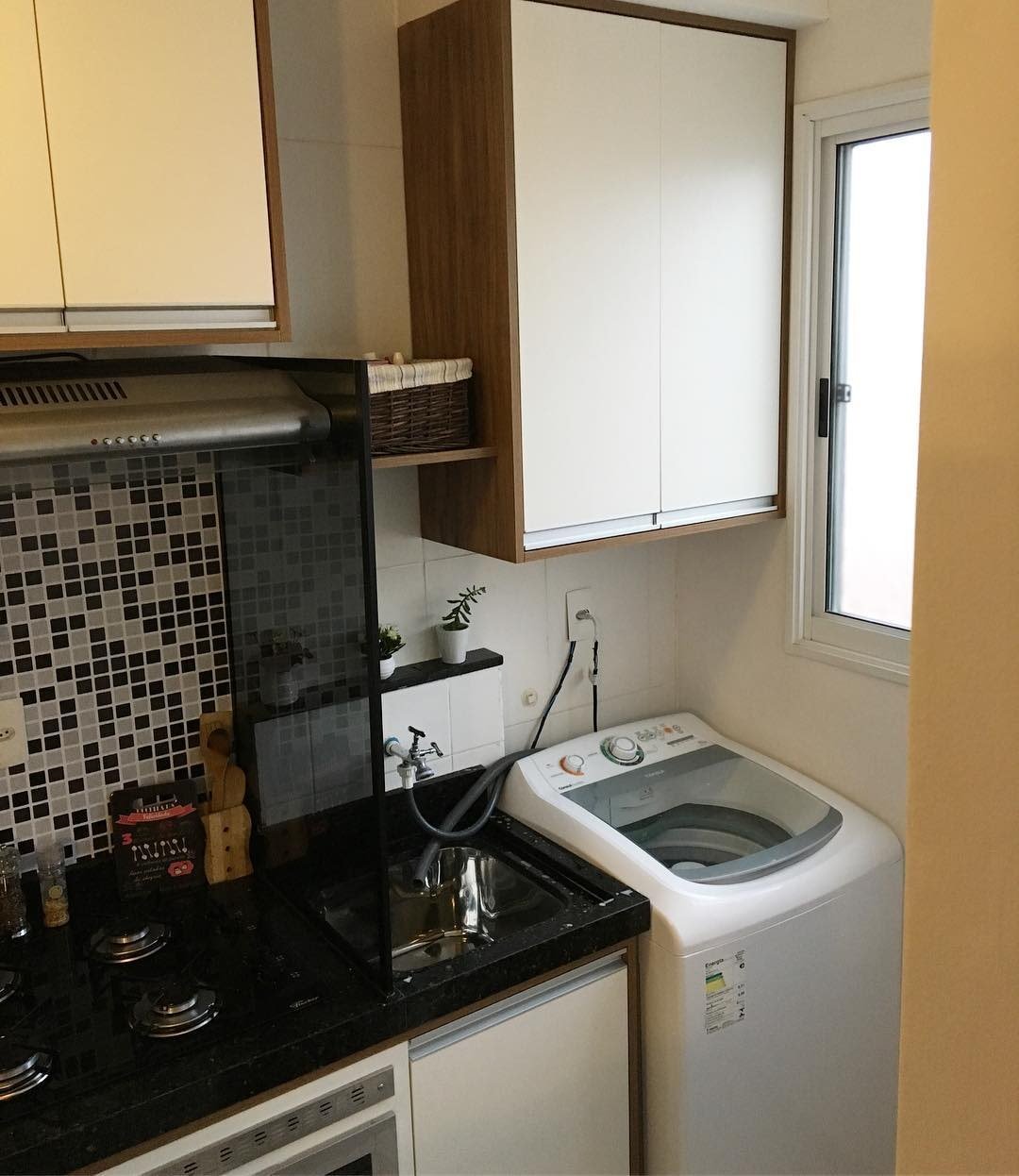

Options for different layouts
A corner kitchen with a washing machine is the most common option, in which the machine can be placed either near the sink, or at the end of the kitchen unit, or under the window.
In a straight kitchen, it is installed closer to the sink to accommodate the rest of the equipment, or it is built into a tall cabinet.
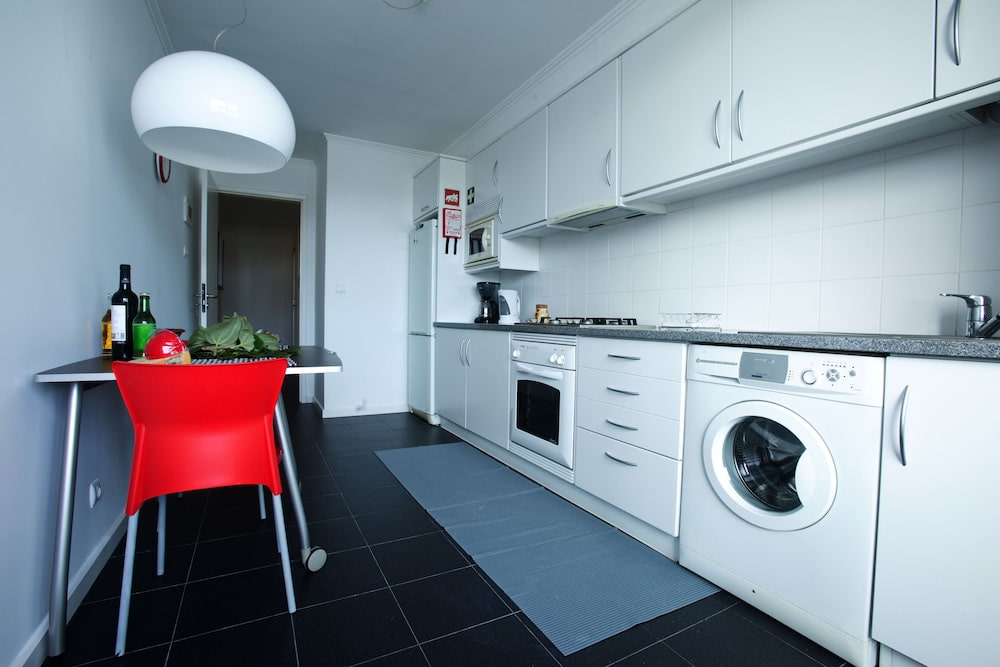

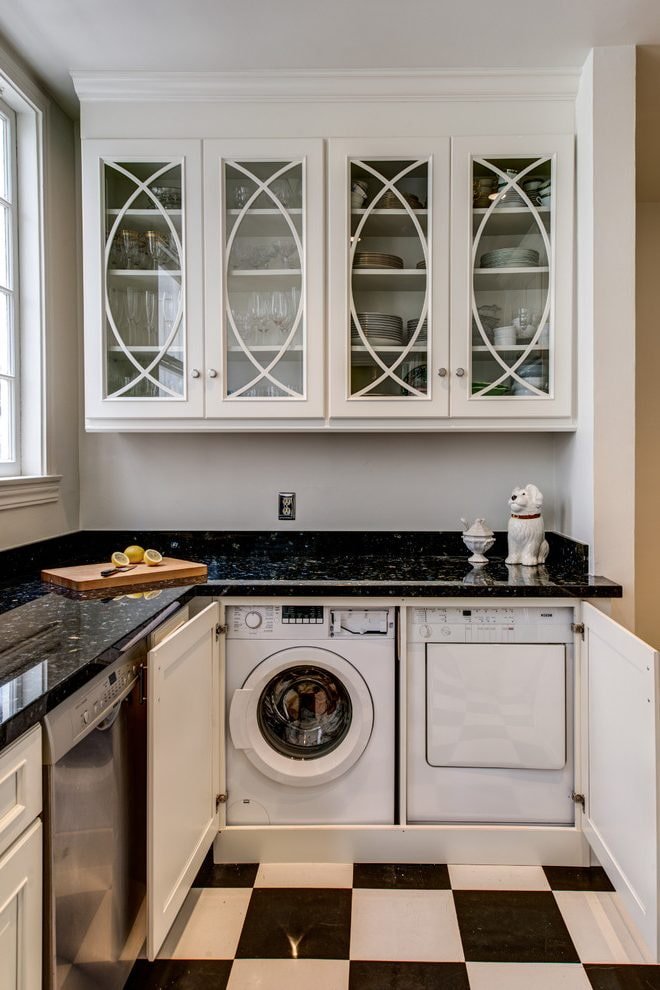

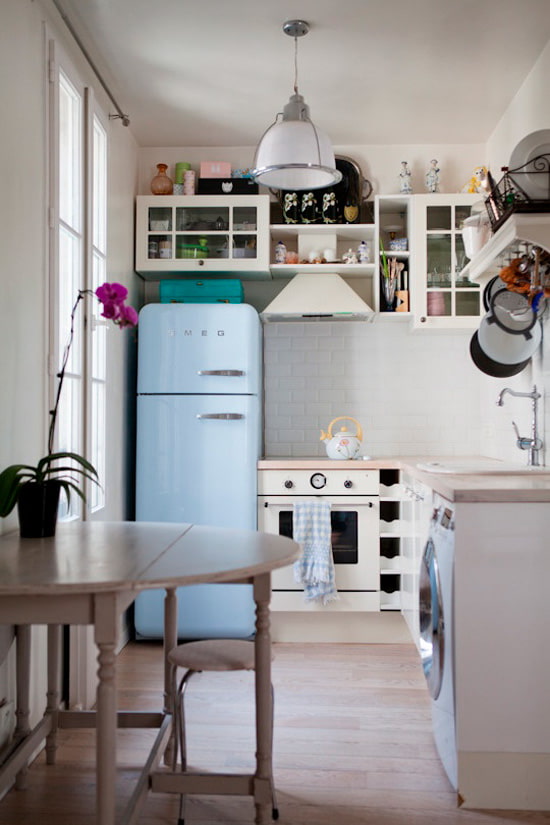

In the photo on the right is a corner kitchen with washing equipment
A two-row kitchen set provides more opportunities for comfortable placement of all necessary appliances: the sink, washing machine and dishwasher are placed on one side, creating a compact “wet zone”, everything else is on the other.
The place for installing a washing machine in a U-shaped kitchen depends on the dimensions and layout. It should not be installed further than 3 meters from the pipe outlet.
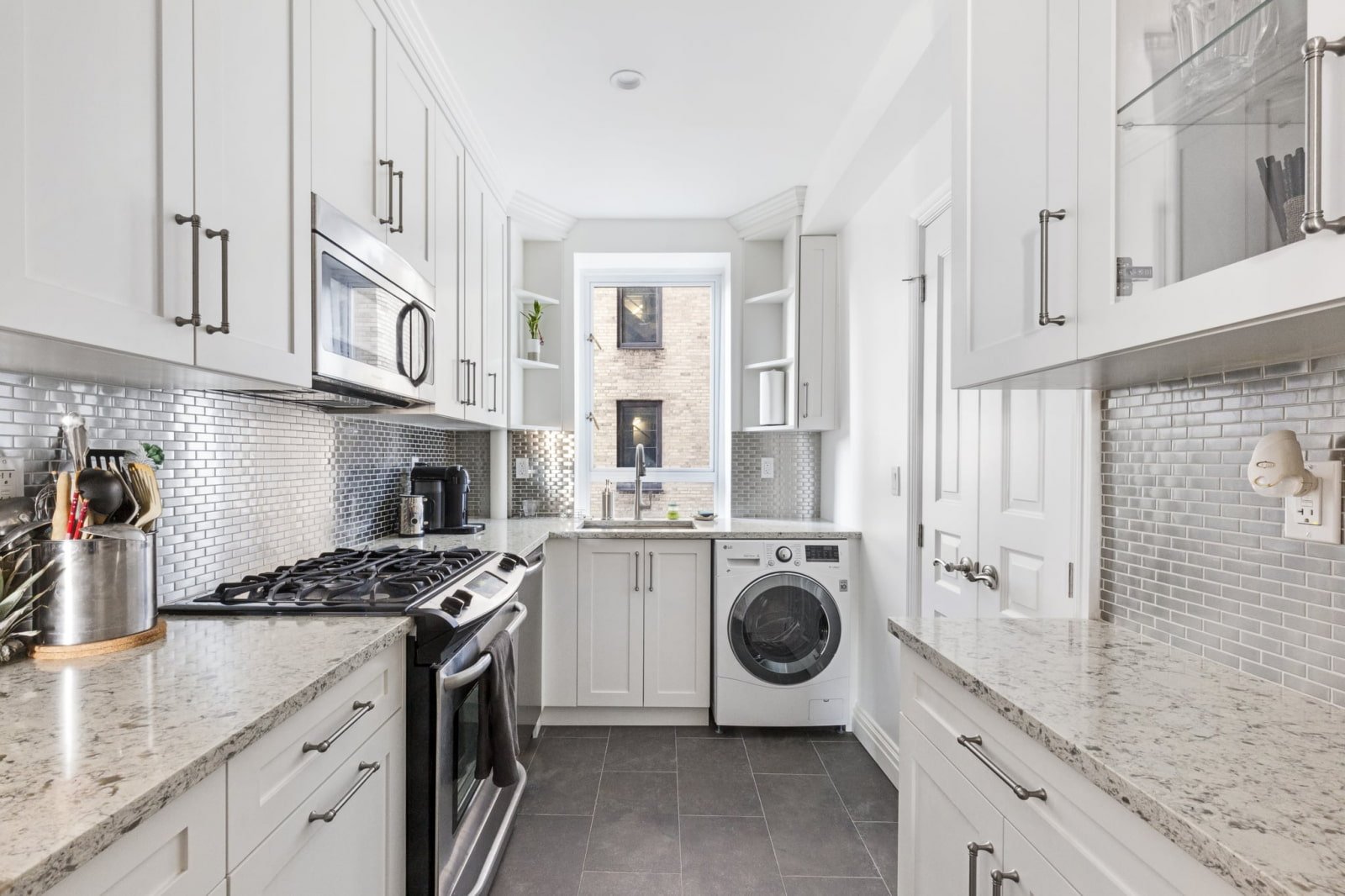

The photo shows the laundry area in a large kitchen
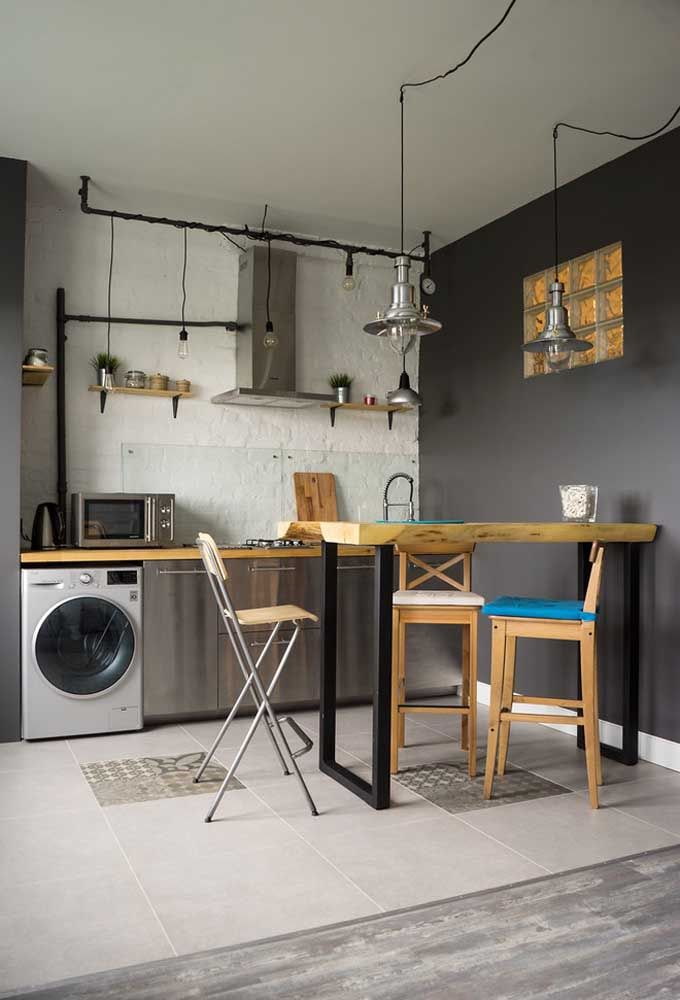

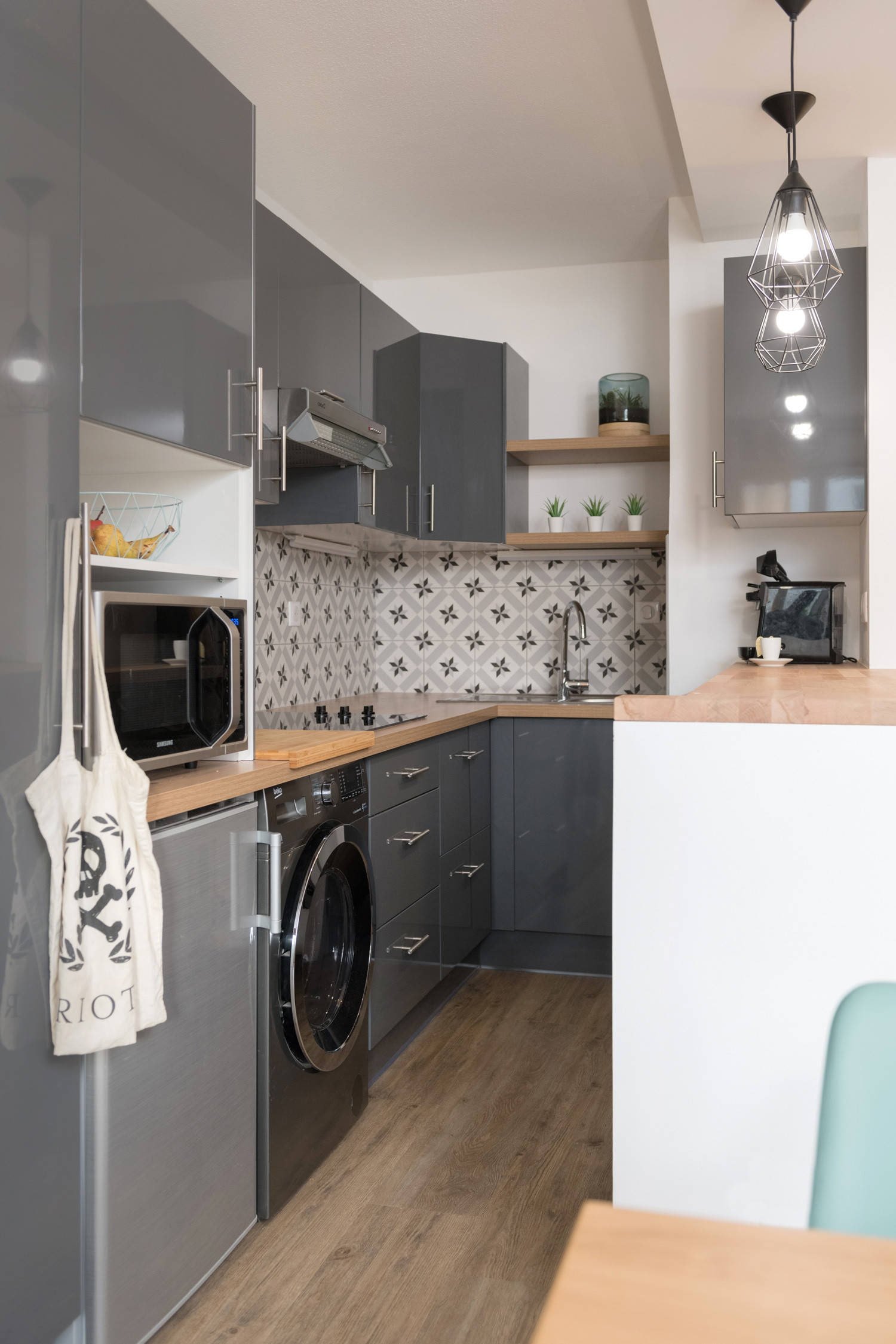

The photo on the left shows a silver machine in a loft-style kitchen
Features of placement for a small kitchen
In a Khrushchev-era building, where there is often not enough work space, the washing machine should be placed under the work area. The washing machine in a small kitchen is covered with a façade or placed openly – the main thing is that it fits in size.
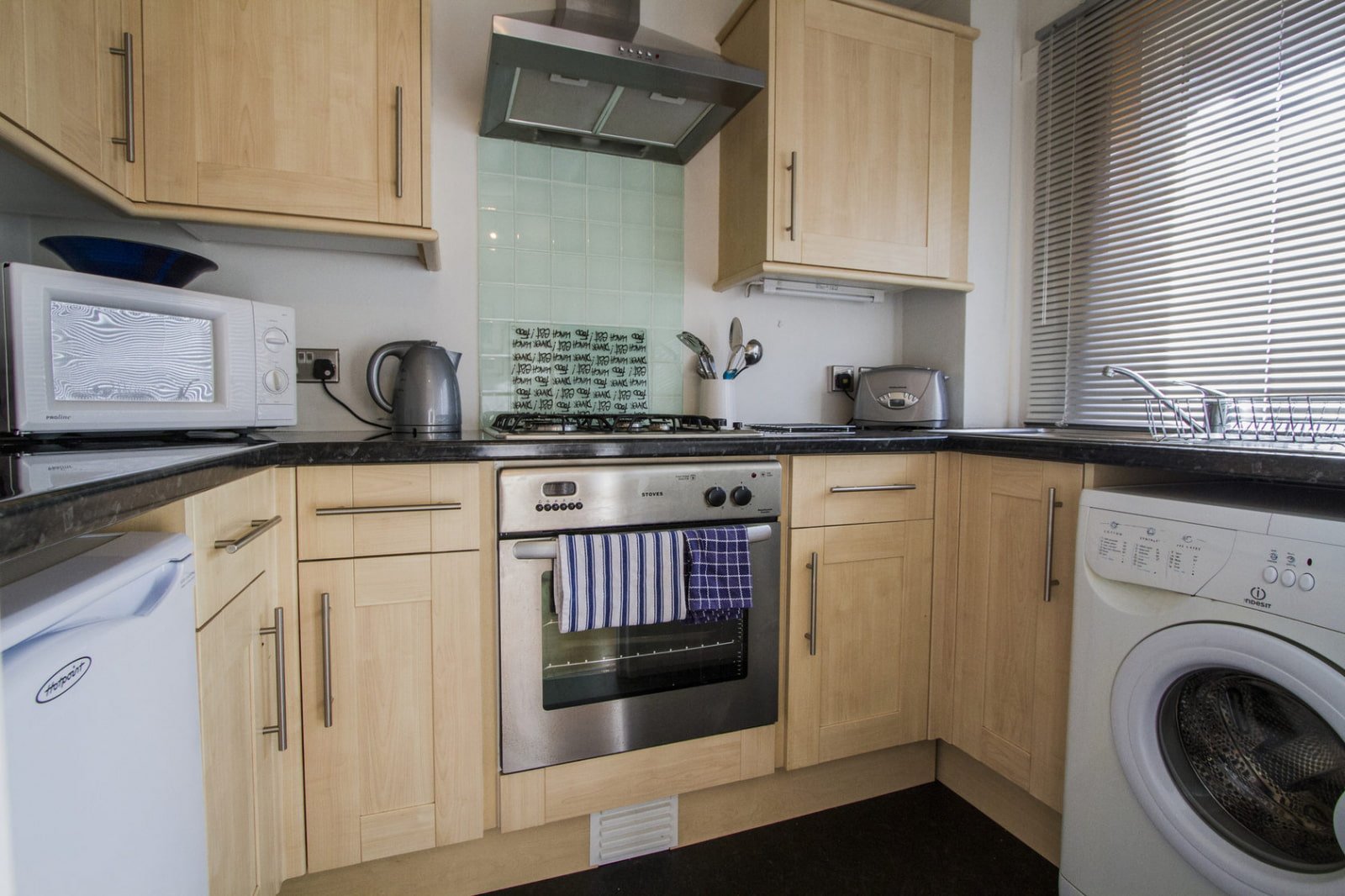

The photo shows the placement of the washing machine next to the sink
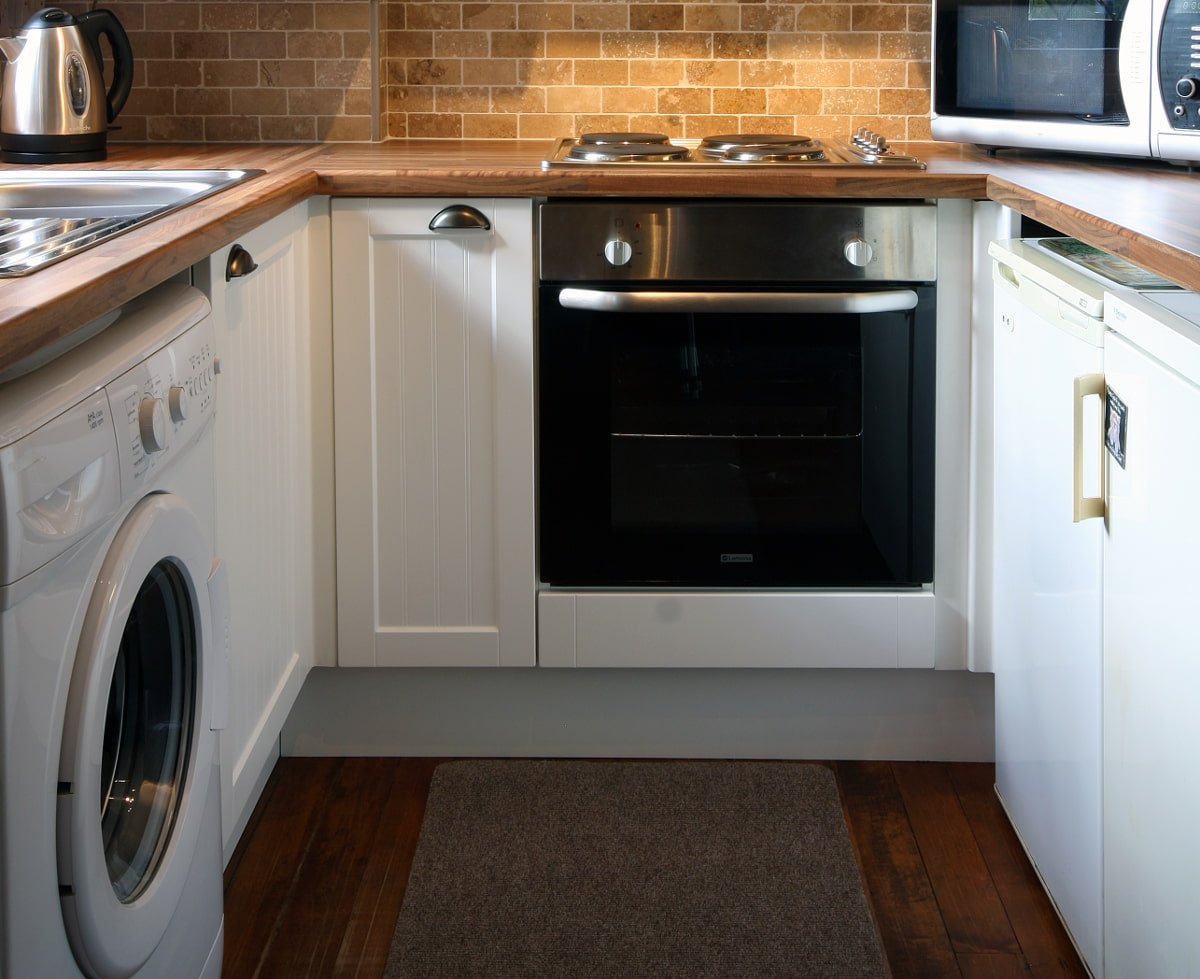

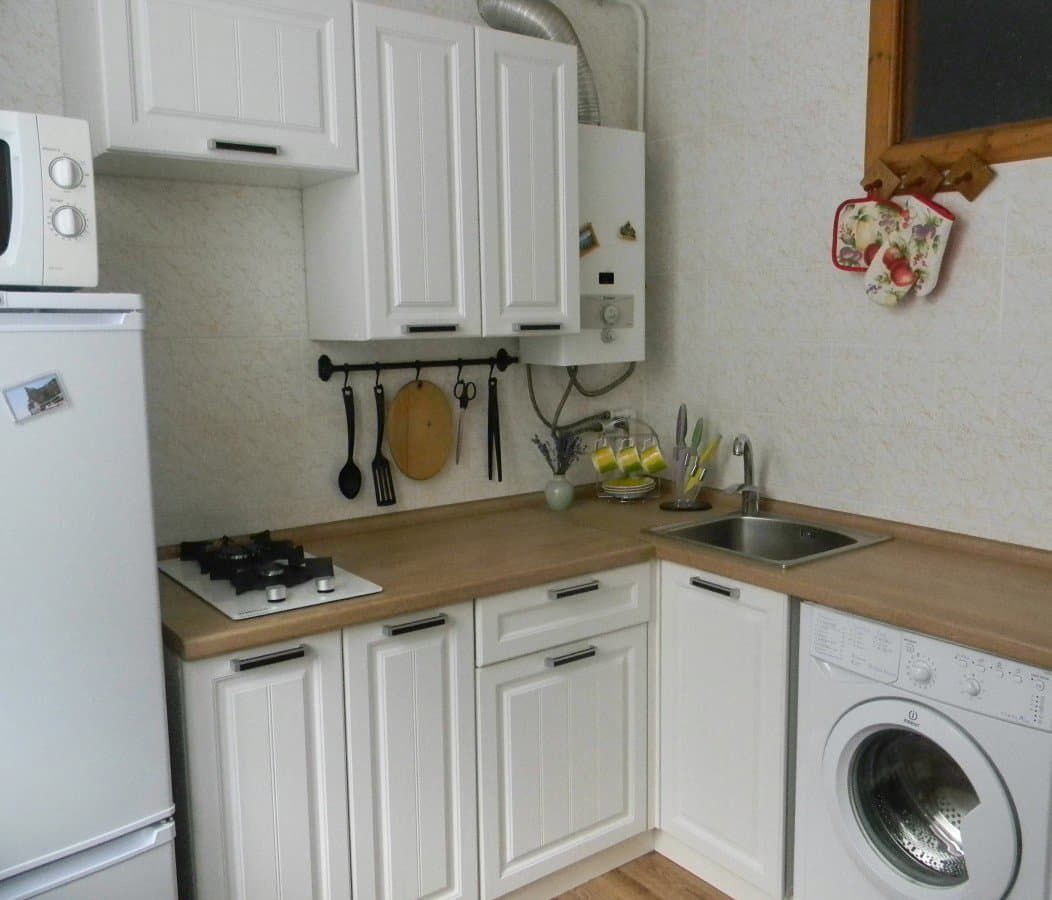

In a corner kitchen unit, it is convenient to place the machine near the sink on the other side of the stove and oven. The linear layout also suggests a place for the washing machine near the sink, separated by a section from the hob.
Do not place electrical appliances and other elements on the countertop above the washing machine – they can fall and be damaged due to vibration.
